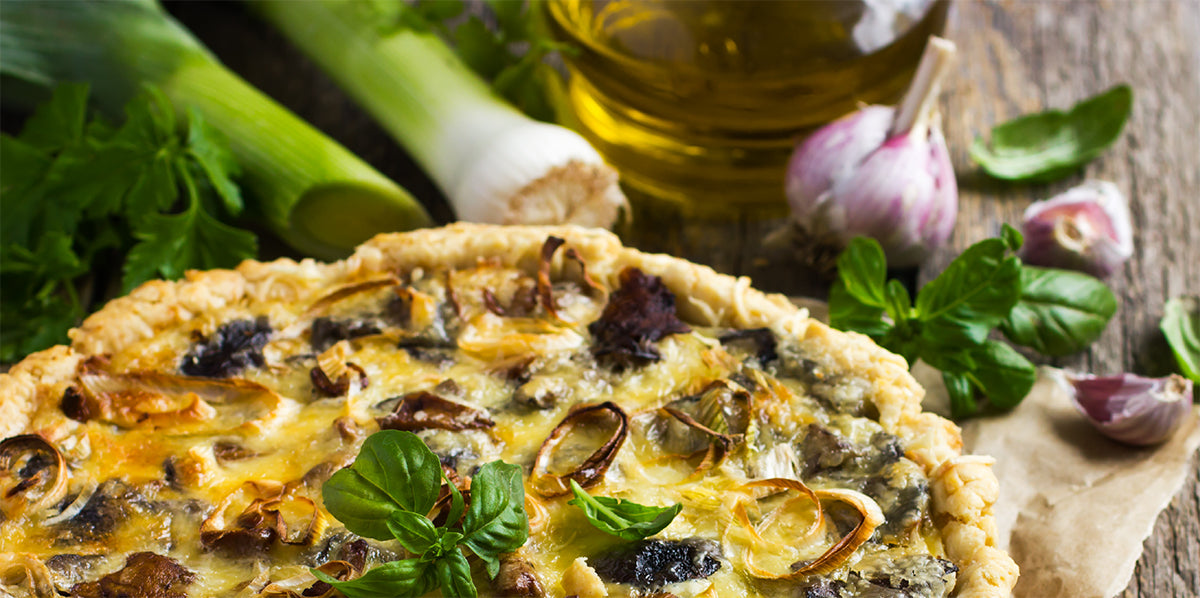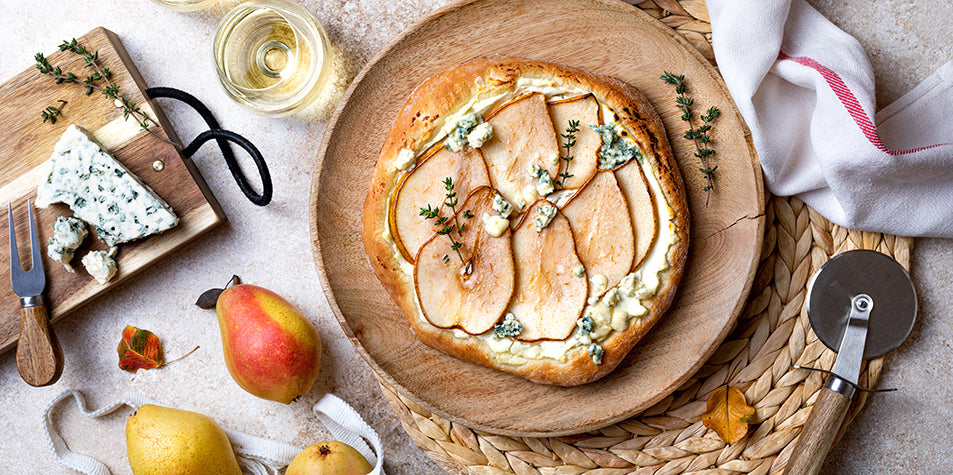Capella Cheese Vaults: The Art of Preservation
At Capella Cheese, we take pride in offering you the finest selection of cheeses from around the world. Cheesemonger Raymond Hook sources cheese from the finest cheesemakers around the world. But did you know that how we store our cheese is just as important as how Raymond sources it? This is why we store all of our cheese in our high-tech storage rooms vaults - to preserve the quality of our cheeses. Let us share some of the secrets behind our cheese storage methods and why they matter for preserving the impeccable quality and luscious flavor of our cheeses.
Our Cheese Vaults: Tradition Meets Modern Technology

One of the most distinctive features of our cheese shop is our high tech cheese vaults. These are three separate rooms where we keep our cheese, by type, in optimal conditions to preserve them until they are ready for sale. Each room has precisely moderated temperature and humidity controls, ensuring that the cheese stays in impeccable quality as crafted by the cheesemaker.
But the most important element of our cheese holding rooms is that there are no fans, no airflow, which mimics true “cave-like” conditions. The rooms were conceived by a PHD graduate from Stanford in collaboration with Cheesemonger Hook. We are the only cheese shop in the world to have cheese rooms with zero airflow, gravity coil condensers, and individual humidity units for each room. We even selected special lights to not create additional heat - every detail was considered.
There is an ante-room for all three rooms, which is cooled and humidified as well, to ensure air from opened doors is exchanged only with like-air, so the conditions in the cheese rooms remain constant.
We have three cheese storage vaults:
LARGE FORMAT VAULT:
This room is for large format and long aged cheeses is 34 degrees and 85% humidity.
WASHED AND BLUE VAULT:
The room for washed rind and blue cheese is 38 degrees and 90% humidity.
SOFT-RIPENING VAULT:
The room for soft ripening and white bloomy rind cheeses is 41 degrees and above 95% humidity.
These rooms are controlled by high-tech controllers, which monitor temperature and humidity 15 times per minute.
Cheese is a living food, and it needs to breathe or risk losing its flavor and texture. By creating a cave-like environment, we allow the cheese to breathe naturally, without changing the cheese.
Why We Don’t Age Our Cheese: The Difference Between Storing and Maturing

You may be wondering why we don’t age our cheese in our vaults. After all, isn’t aging cheese a way to enhance its flavor and complexity? The answer is yes, but only if done by skilled cheesemakers who know how to control the aging process. Aging cheese, or affinage, involves nurturing cheese over time under controlled conditions, such as temperature, humidity, and time. Key factors like these are meticulously managed to ensure that the cheese matures in the desired way, developing new flavors and textures.
Aging cheese requires expertise, experience, and equipment. That’s why we leave the aging process to the cheesemakers who produce our cheese, and we respect their craft by not altering their products. Our goal is to keep the cheese in ideal condition at the highest quality, not to change its character or flavor. We are not maturing or affecting the cheese, we are simply preserving it.
How Aging Affects Cheese: The Science and Art of Affinage
So what does aging do to cheese, and why is it important to store cheese in the proper conditions? As cheese ages, it undergoes a series of biochemical reactions, transforming it from a fresh, bland state to a mature product with complex flavors and aromas. These reactions are driven by enzymes and microbes that break down the fats a
nd proteins in the cheese, creating new compounds that give aged cheese its distinctive taste and texture. For example, the crunchy crystals in aged Parmesan are made up of an amino acid called tyrosine, and the blue veins in Gorgonzola are formed by a mold called Penicillium roqueforti.

However, these reactions are not uniform or predictable. They depend on many factors, such as the type of milk used, the bacterial and mold cultures added, and the environmental conditions during aging. Different aging techniques, such as surface-ripening or interior-ripening, also influence the final character of the cheese. That’s why aging cheese is both a science and an art, and why cheesemakers have to monitor and maintain the cheese aging environment carefully.
The length of time that cheese can be aged for varies depending on the type of cheese and the desired outcome. Some cheeses, such as mozzarella or feta, are best enjoyed fresh, while others, such as cheddar or gouda, can be aged for months or even years. The longer the cheese is aged, the more intense and complex its flavor and texture become. However, there is a limit to how long cheese can be aged, as eventually it will become too dry, hard, or bitter to eat.
How to Enjoy Our Cheese: The Best Way to Store and Serve

Now that you know how we store our cheese and why it matters, you may be wondering how to enjoy our cheese at home. Here are some tips to help you store and serve our cheese in the best way possible:
- Store our cheese in the refrigerator, preferably in the vegetable crisper or cheese drawer, where the temperature is cold and stable.
- Use a fresh piece of wax paper, parchment paper, or cheese paper to wrap our cheese after each use. Avoid plastic wrap or aluminum foil, as they can trap moisture or air and affect the cheese quality.
- Bring our cheese to room temperature before serving, as this will enhance its flavor and aroma. Take it out of the fridge about an hour before eating, and unwrap it to let it breathe.
- Cut our cheese with a sharp knife or a cheese slicer, and use separate knives and cutting boards for different types of cheese to avoid cross-contamination.
- Pair our cheese with complementary foods and drinks, such as bread, crackers, fruits, nuts, honey, wine, beer, or cider. Experiment with different combinations and discover your favorites.
Watch our video of how to store cheese like a pro:
We invite you to visit our cheese shop and explore our wide range of cheeses from around the world. Our top-notch Cheesemongers will be happy to help you find the perfect cheese for your taste and occasion.





Leave a comment
This site is protected by hCaptcha and the hCaptcha Privacy Policy and Terms of Service apply.